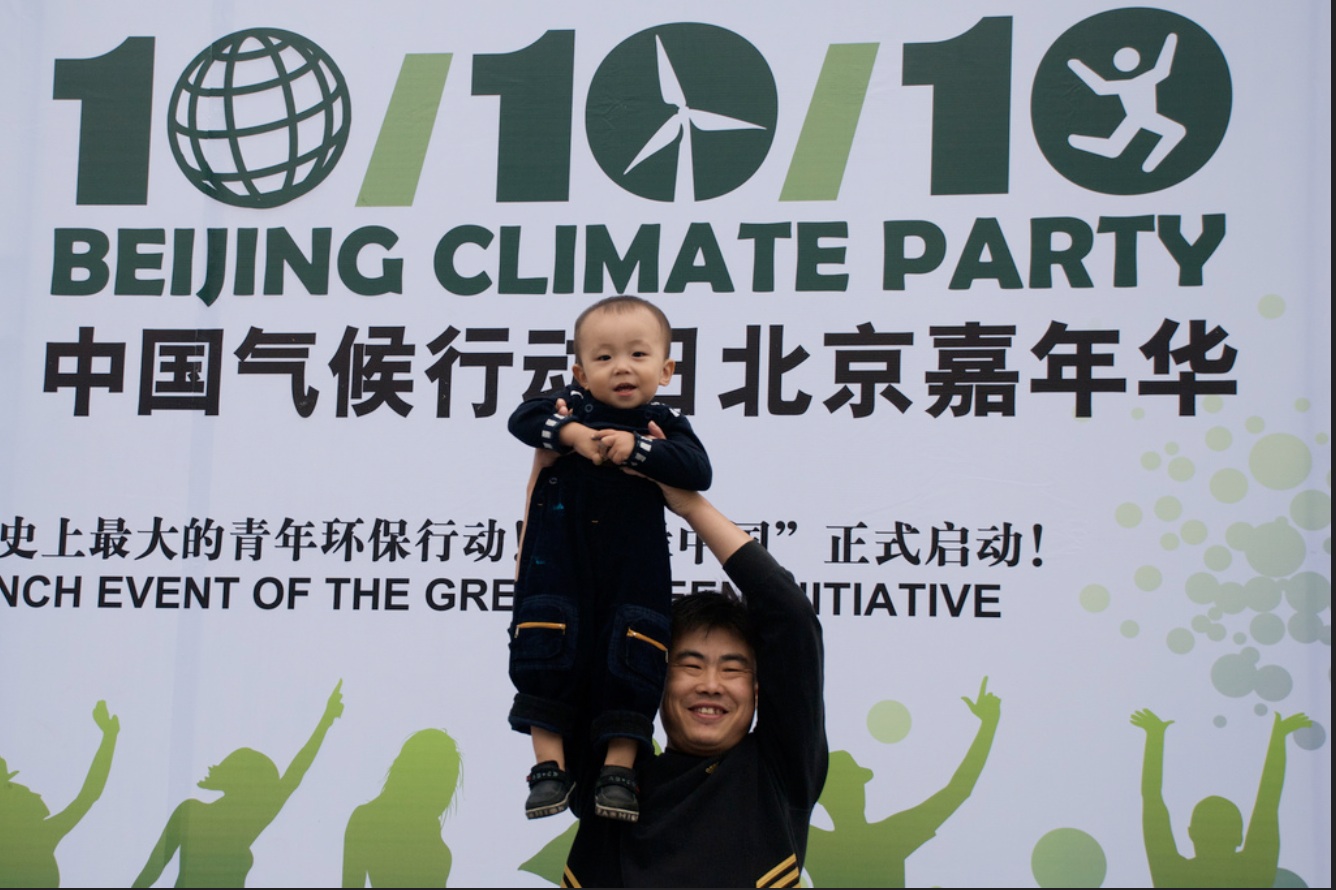What Now?
As rising concerns of climate change and pollution have swarmed the minds of Chinese citizens, the people of Beijing have done certain things to respond to these issues and advocate for a transition to renewable energy.

| Informal Public Response: Social Media |
In Beijing, like in many places around the world, activism often takes place online through social media. A lot of awareness has been spread in Beijing through weibo and WeChat, popular Chinese social media platforms, where youth often post photos of grey and polluted skies (Mullin, 2015). However, populations such as the elderly do not have access to such platforms of information, and are more accustomed to the tightly regulated Chinese media which often communicates minimized risk levels surround pollution and the use of fossil fuels (Mullin, 2015).
| NGOs and Official Action Steps |
Environmental activism is the advocacy for or work toward protecting the natural environment (Hsu & Baptisite, 2016).
In regards to energy, several NGOs have been created to conduct research and promote awareness. Some notable examples of Beijing NGO’s that work with renewable energy include:
- Beijing Energy Efficiency Center: This organization, established in 1993, conducts copious amounts of research on energy conservation theories, methods and policies. It also works as an energy consultant service for energy conservation (BECon, n.d).
- South-North Institute for Sustainable Development (SNISD) in Beijing: This group works to conduct research on energy laws and promote the adoption of renewable energy resources. As of 2007, one of their main projects was focused on encouraging wind use by Beijing companies and lobbying the government to establish a market-based mechanism to encourage the purchase of wind energy (Ho,2007).

With many organizations like this, as well as pressure form the outside world, Beijing has started to take several steps in response to environmental degradation and activism, specifically in regards to renewable energy (Hart, 2016):
•In 2014, Beijing shut down more than 1,000 coal mines, 5 gigawatts of thermal power capacity, and 55,000 small-scale coal-fired industrial boilers to reduce coal pollution.
•Beijing is implementing regional and municipal level coal-control and emission-reduction policies that aim to put some of Chinese provinces and cities on a path to peak emissions as early as 2020 or 2022.
•Starting in 2012 (after the pollution crisis), Beijing went from withholding air-quality data from citizens to installing more than 1,000 air-monitoring devices across the nation to provide them with live data on major air pollutants.
•In September 2015, Chinese President Xi Jinping announced that Beijing will finally move the nation toward a so-called “green dispatch” model. This model claims to prioritize power sources based on the cost of producing a steady amount of electricity. Since the wind and the sun produce the primary inputs, there are little costs once the plant is up and running, so these models are becoming the more desired option.
__________________________________
References
Beijing Energy Efficiency Center (BECon). (n.d.). http://www.bing.com/cr?IG=95C496333E4E43BF86350AD23967E657&CID=21BA270AD2A566971D4D2EEED3946744&rd=1&h=bvGFBL_av9NDFSq-rcGdH43KMOqdqPIVSNLkLY1fC7U&v=1&r=http://www.chinacsrmap.org/Org_Show_EN.asp?ID=893&p=DevEx,5083.1
Hart, M. Beijing’s Energy Revolution Is Finally Gaining Serious Momentum. Retrieved December 06, 2016, from https://www.americanprogress.org/issues/security/reports/2015/12/03/126606/beijings-energy-revolution-is-finally-gaining-serious-momentum/
Ho, P., & Edmonds, R. (Eds.). (2007). China’s embedded activism: opportunities and constraints of a social movement. Routledge.
Hsu, C., & Baptiste, A. (2016, October 26. Environmental Activism. Lecture presented at Environmental Problems and Activism in the People’s Republic of China in Colgate University, Hamilton.
Wasserstorm, J. The Pollution Crisis and Environmental Activism in China: A Q&A with Ralph Litzinger | Dissent Magazine. Retrieved December 06, 2016, from https://www.dissentmagazine.org/online_articles/the-pollution-crisis-and-environmental-activism-in-china-a-qa-with-anthropologist-ralph-litzinger
Images
McMaster, P. (n.d.). DSC_8514 [Photograph]. Flickr.https://www.flickr.com/photos/dragonpreneur/4254329072/in/photolist-7tWxPf-7tSCxH-5eiMcV-5kV2is-5eiwHK-o85DYj-onxwSU-o85rjj-o85EGn-5eiSiK-opzgfe-ophUcF-o86CHZ-opmWx7-opi8LK-onxwm3-5kV1VY-5kQQek-62fRXz-5ku45Q-5mNmGT-5kV1zf-62k4fd-62fQkn-5gDNTf-5kpMax-5kQL3H-5b2YBm-7tSiTV-5ku4T7-5ku4ko-5kpMvT-5ku4Yw-aLxmAM-5kV2bL-62jXwS-7kihrz-5ku4CJ-5kV1uj-5kV36d-opi6AT-5biu1s-549sQR-p7dxra-5bebrH-5eiD2v-62fELT-opxPL7-onxftG-5eoh5Q
350.org. (n.d.). Beijing, China [Photograph]. Flickr.https://www.flickr.com/photos/350org/5067595354/in/photolist-8HNKxG-7Vz4g9-5vLBdj-5aky3m-SHbMy-4GJ2jg-22tcKp-aBX5DZ-22tkJg-22tjFx-22tfrX-22xF9A-22xCew-4FZJMw-nYFYvc-8HMjEY-pUVYxK-8HMcfS-obsb5X-ob9LvT-22tevR-5aghND-nTXPqq-qcc2rt-prP7V8-q71pBE-5akxkL-qoyQrr-pfnUAL-8HVVVH-4ZbpkR-nU3Jq5-nYFYkH-og8tg5-nTXnh5-8HRNo5-22tfGF-65e6yb-65e6yw-22xJzm-obnPBC-5ehNA-4ZfFqd-22tkfn-22tdBM-pfBjRT-22xE1b-H8xPX-ob9Lxg-qCJbpZ
